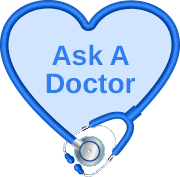Varicose Veins: Symptoms, Diagnosis, Treatment
What are varicose veins?
Varicose veins are swollen, enlarged and twisted veins that bulge under the surface of the skin. They are usually
blue or purple in colour and are normally seen on the legs, ankles and/or feet.
Veins have valves that ensure blood flows in one direction towards the heart. When these valves weaken or get
damaged, blood can flow backwards and accumulate in the veins, causing them to swell and potentially develop
varicose veins.
Varicose veins are usually not a cause for alarm. While they are not considered a medical emergency, untreated
varicose veins can be inconvenient for individuals living with them.
What are the symptoms?
Symptoms of varicose veins include:
- Bulging, twisted, rope-like veins that are bluish or purplish.
- Muscle cramps in the leg, particularly at night.
- Aches or pain in the legs.
- Itching and dry skin over the affected vein.
- Swollen ankle and feet.
- A feeling of heaviness in the legs and feet.
What are the causes?
The causes include:
- Age: Veins lose their elasticity as a person ages. The valves within the veins tend to stiffen
as time passes.
- Gender: Women are more likely to develop varicose veins. Hormonal changes during pregnancy,
menstruation, or menopause may be a factor because female hormones tend to relax vein walls. Hormone treatments,
such as birth control pills, might increase the risk.
- Family history: Some individuals are genetically predisposed to having varicose veins.
- Lifestyle:Standing or sitting for long periods of time and wearing tight clothing such as pants
with tight waistbands can contribute to poor blood circulation, increasing the likelihood of developing varicose
veins. A sedentary lifestyle can also increase the risk of having varicose veins.
- Weight: Being overweight causes the veins in your body to work harder to return blood to the
heart. This can exert increased pressure upon the valves in the veins, making them more prone to leakage.
What are the potential complications?
Varicose veins are usually not serious. However, if left untreated, they can lead to complications such as:
- Bleeding
- Blood clot formation in the veins
- Deep vein thrombosis
- Varicose eczema
- Venous ulcers
How is this condition diagnosed?
Varicose veins are typically diagnosed through a combination of a physical examination and medical history, along
with specific diagnostic tests to assess the condition of the veins.
In certain cases, a Duplex ultrasound is recommended to provide better visualisation of the affected region(s) and
help decide on the most suitable treatment option(s). A Doppler ultrasound can also be used to detect and measure
blood flow through the valves of the veins being investigated.
How are varicose veins treated?
Treatment for varicose veins depends on the severity of the condition, the symptoms experienced, and the
patient’s overall health.
Lifestyle changes
- Exercise: Regular physical activity, especially activities like walking, improves blood
circulation in the legs and can help reduce the pooling of blood in the veins.
- Weight management: Maintaining a healthy weight reduces pressure on the veins, which can help
alleviate symptoms and prevent the progression of varicose veins.
- Elevating the legs: Periodically raising the legs above heart level when sitting or resting can
help improve blood flow and reduce swelling.
- Avoiding long periods of standing or sitting: Moving regularly and taking breaks to walk around
or stretch can help keep blood flowing properly through the legs.
- Wearing loose clothing: Avoiding tight clothing, especially around the waist, legs, or groin,
can prevent restriction of blood flow.
Compression stockings
- Compression stockings apply gentle, graduated pressure to the legs, helping veins and leg muscles move blood
more efficiently.
- They come in various strengths and lengths, from knee-high to full-length. A doctor can recommend the
appropriate type based on the severity of the condition.
- They can help reduce pain, swelling, and discomfort.
Medications
- Over-the-counter pain relievers like aspirin can help manage pain and swelling.
Procedures
- Endovenous ablation: Uses laser energy to seal off more prominent varicose veins from the
inside.
- Sclerotherapy: A chemical solution or foam is injected directly into the varicose veins,
causing them to scar and close.
- Vein ligation or stripping: This surgical procedure involves removing the affected veins from
the body.
How to prevent varicose veins?
It can be challenging to prevent varicose veins from developing. However, it is possible to reduce your chances of
having them by practising a healthy lifestyle that promotes good blood circulation. These include:
- Avoid standing or sitting for long periods.
- Maintain a healthy weight.
- Quit smoking.
- Regular exercise.
- Take regular breaks throughout the day.
- Elevate leg while resting.
- Wear clothes that fit well, making sure your waistband is not too tight.
Book an appointment at Pantai Hospitals
Varicose veins are not life-threatening. However, they can cause long-term health issues if left untreated and
allowed to deteriorate.
A dedicated and expert team of vascular
surgeons at Pantai Hospitals is available for consultation to provide patients with the best care and
assistance. Get in touch with us to book an appointment with a
general surgeon today.
Pantai Hospital Malaysia is accredited by the Malaysian Society for Quality in Health (MSQH) for its commitment
to patient safety and service quality.


